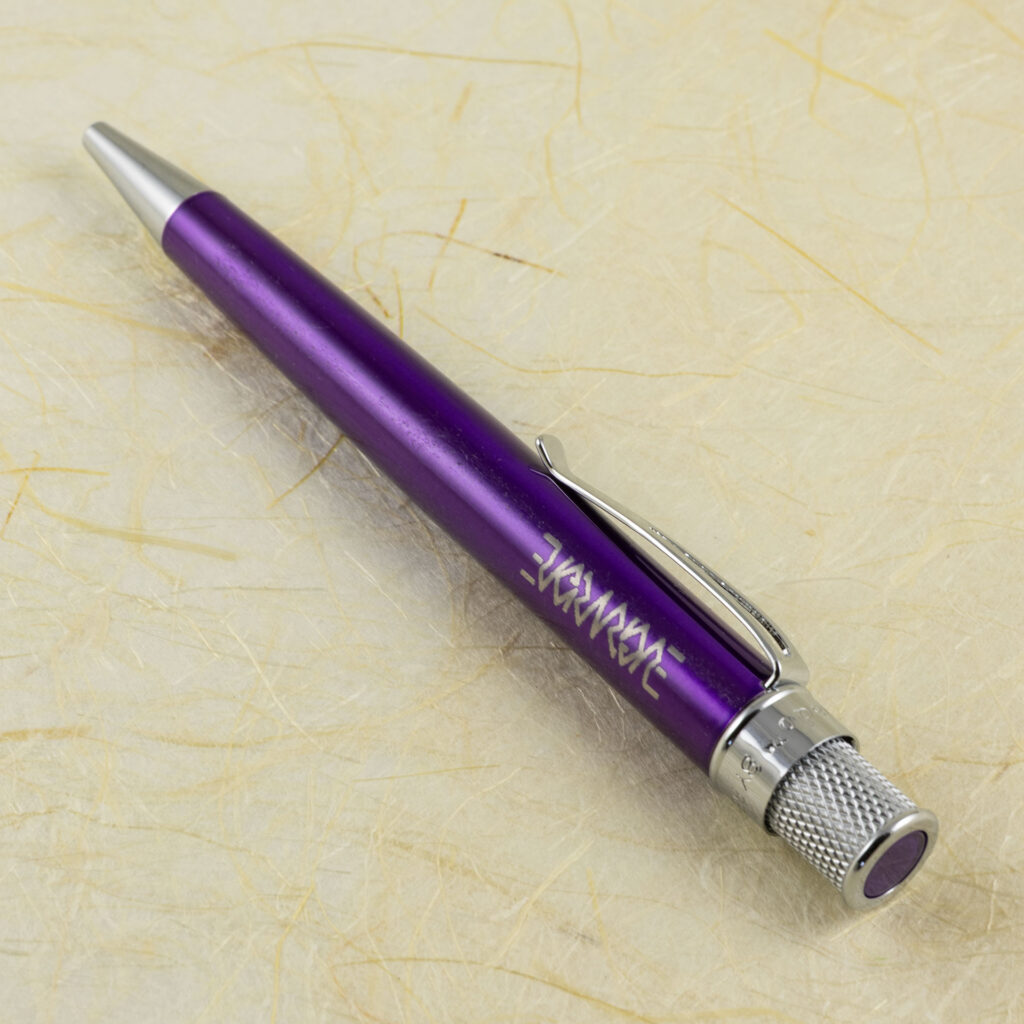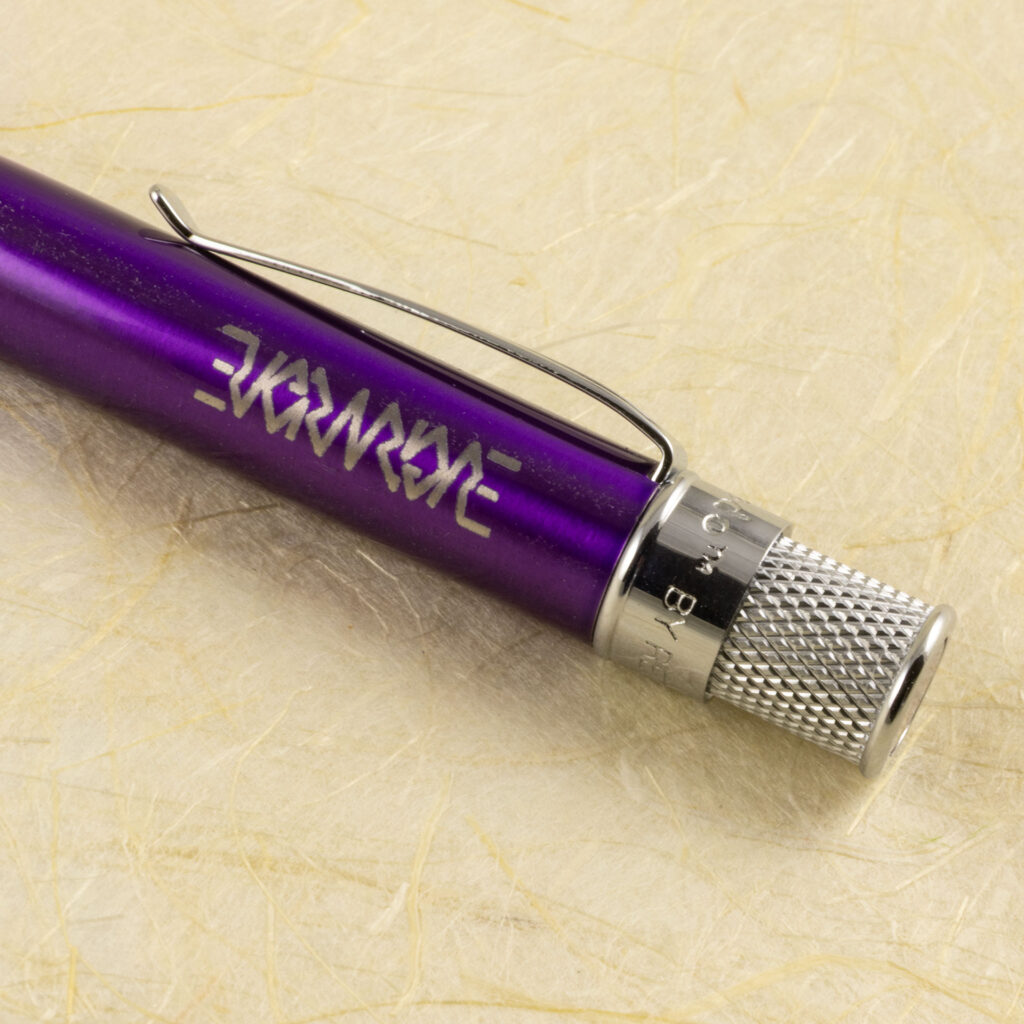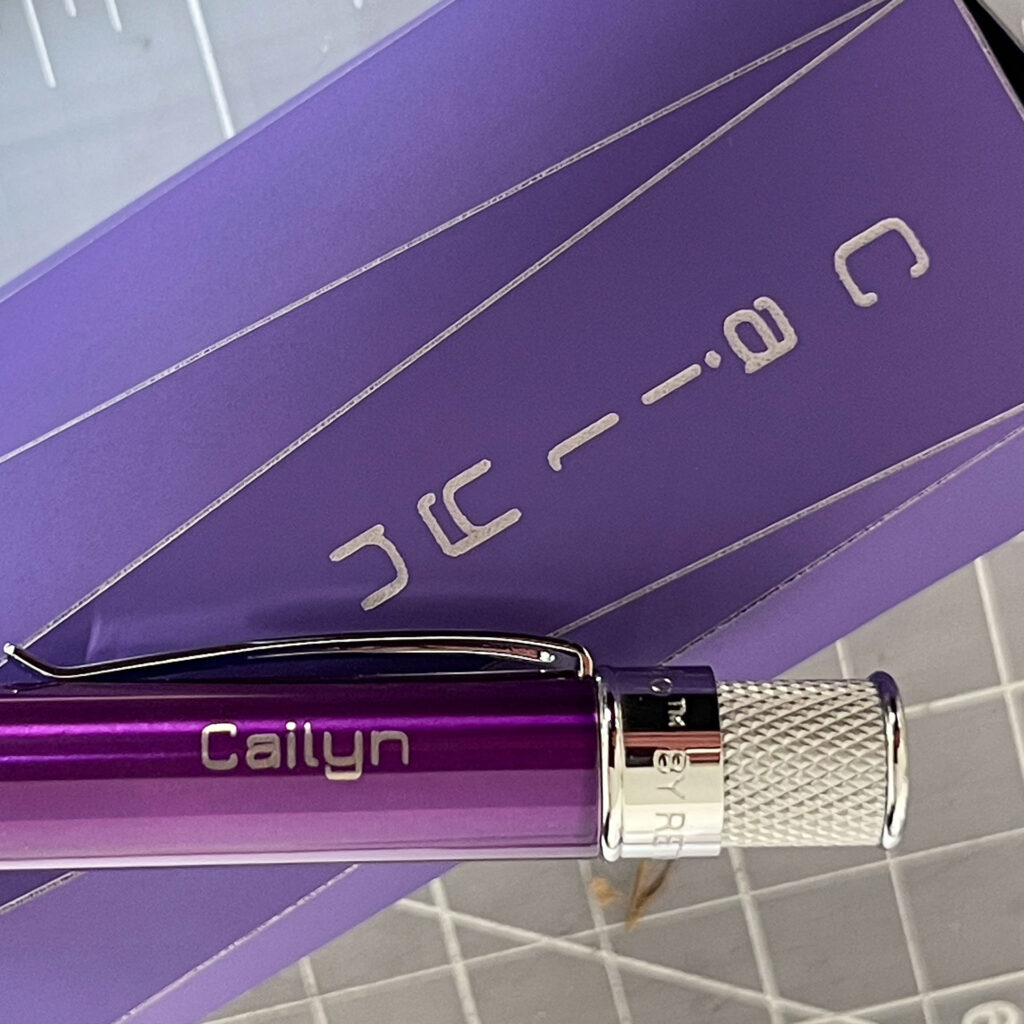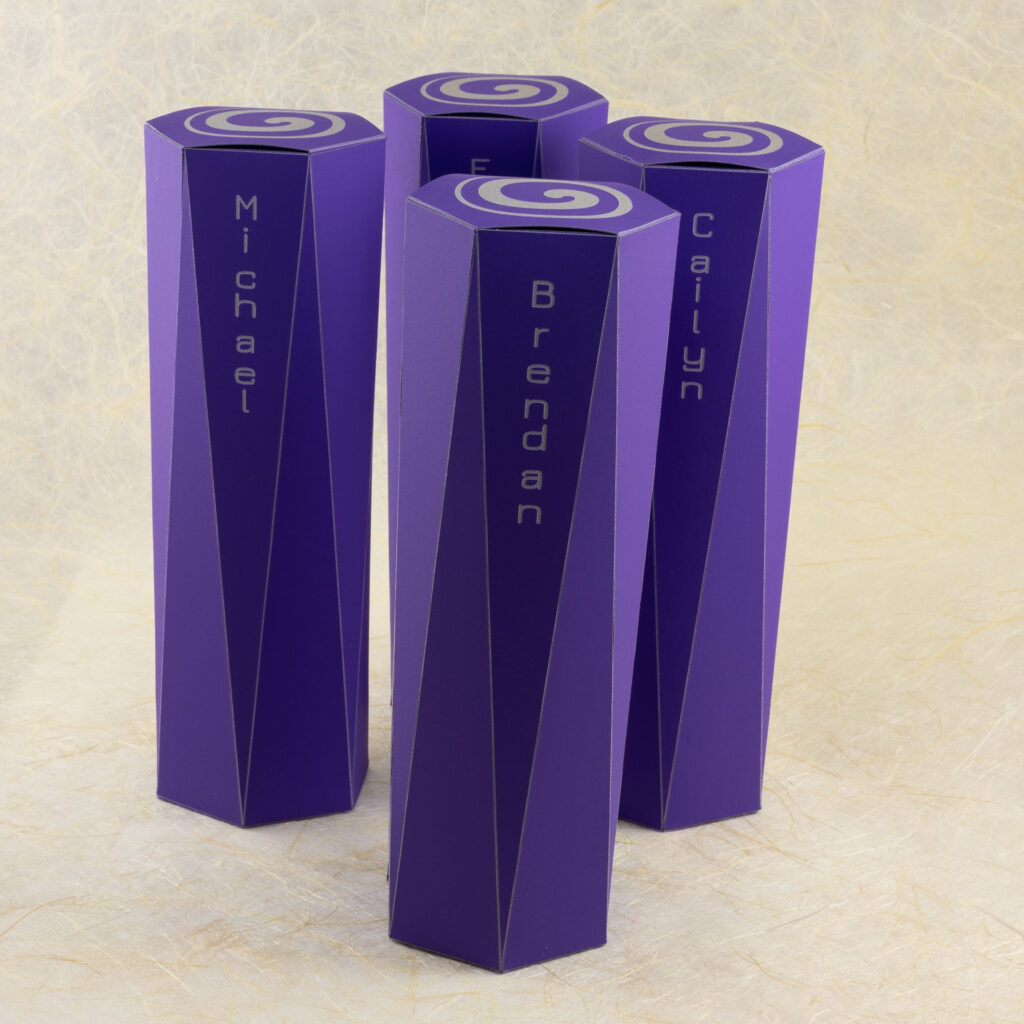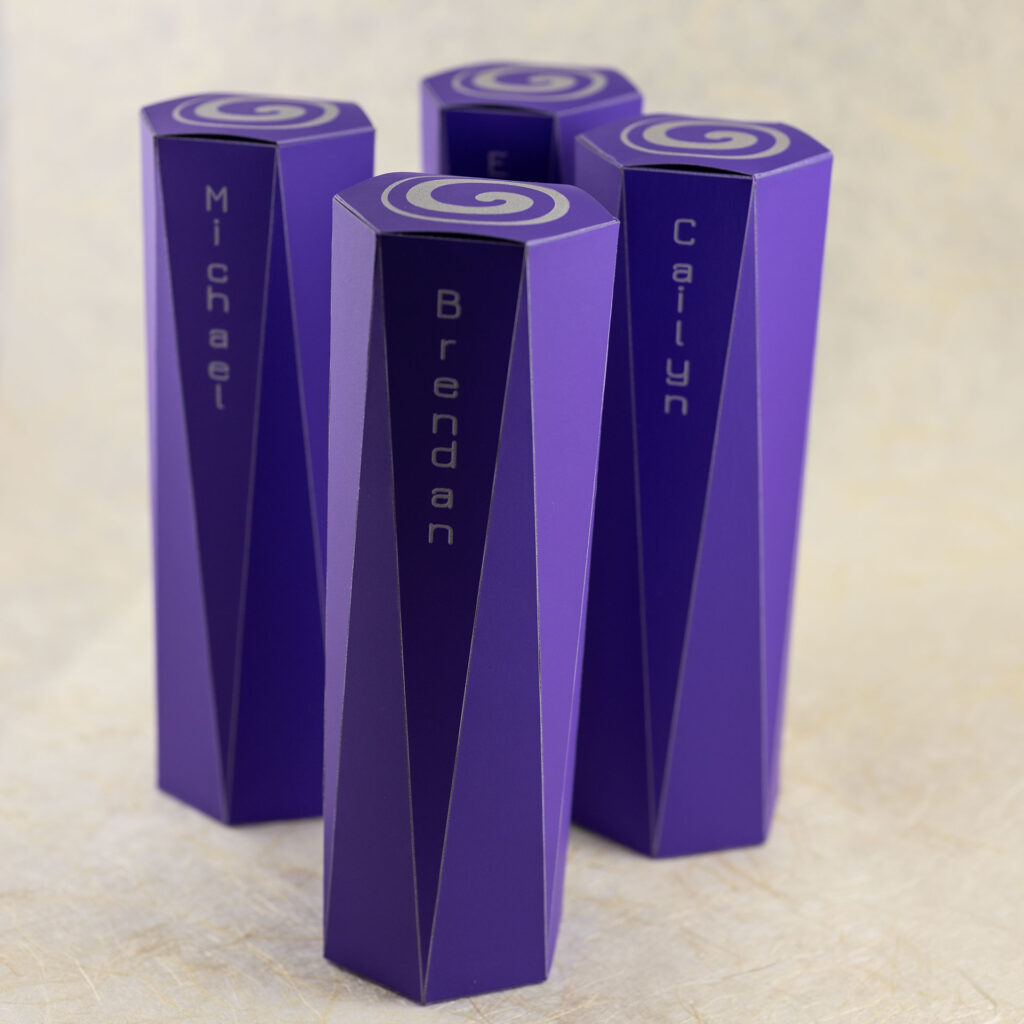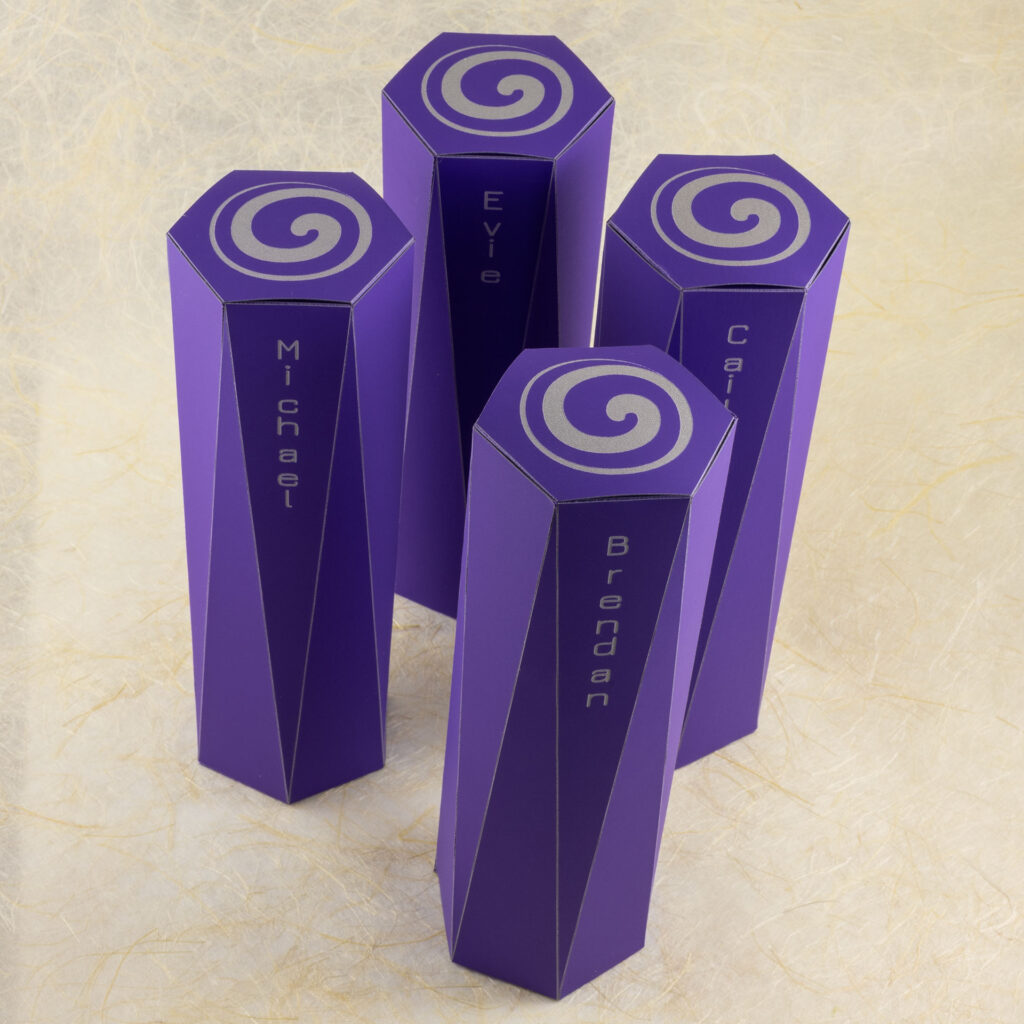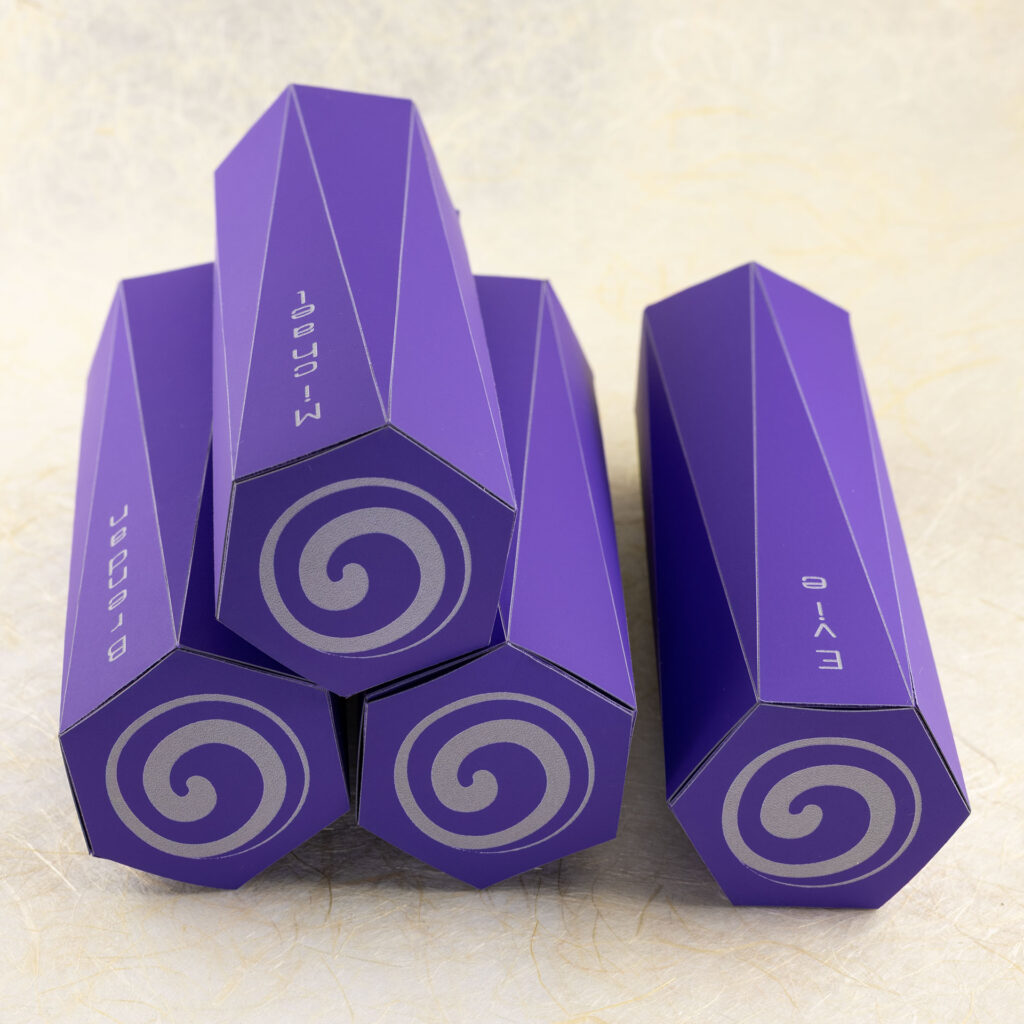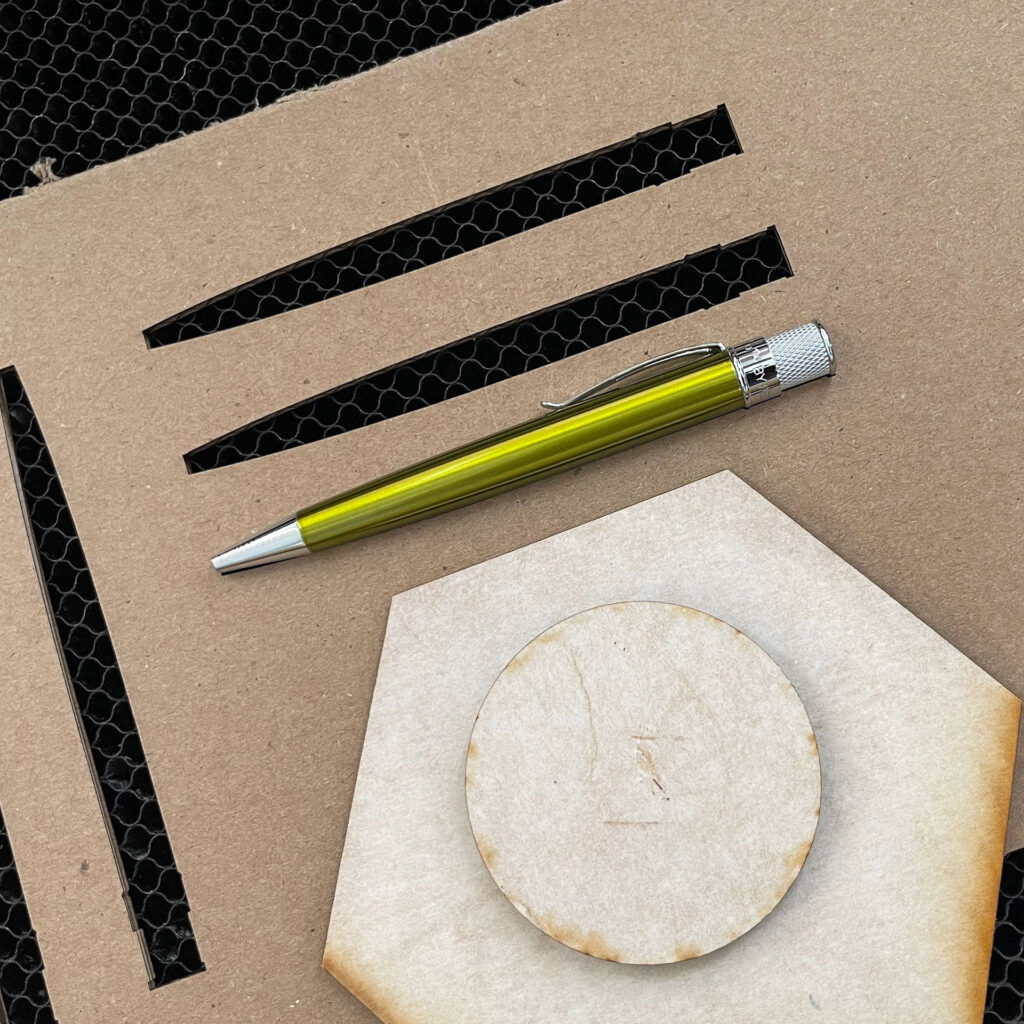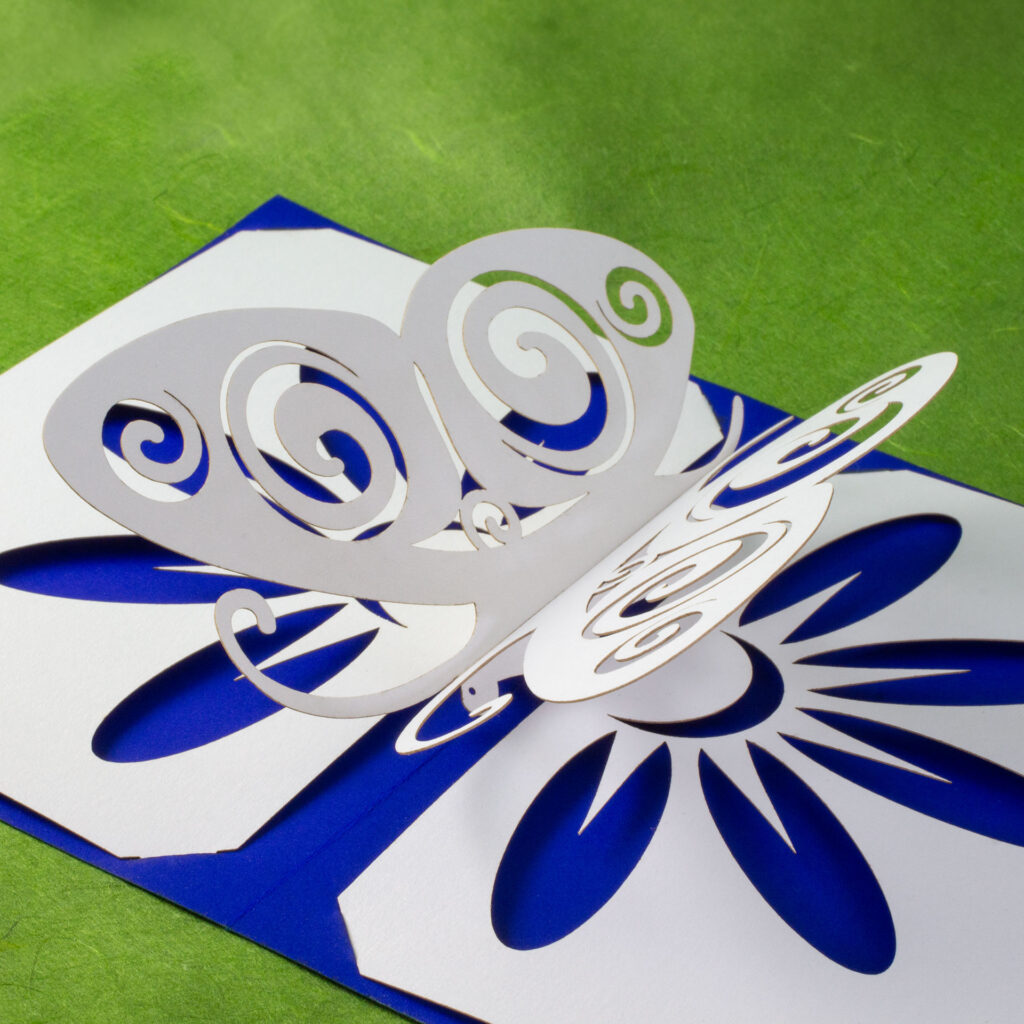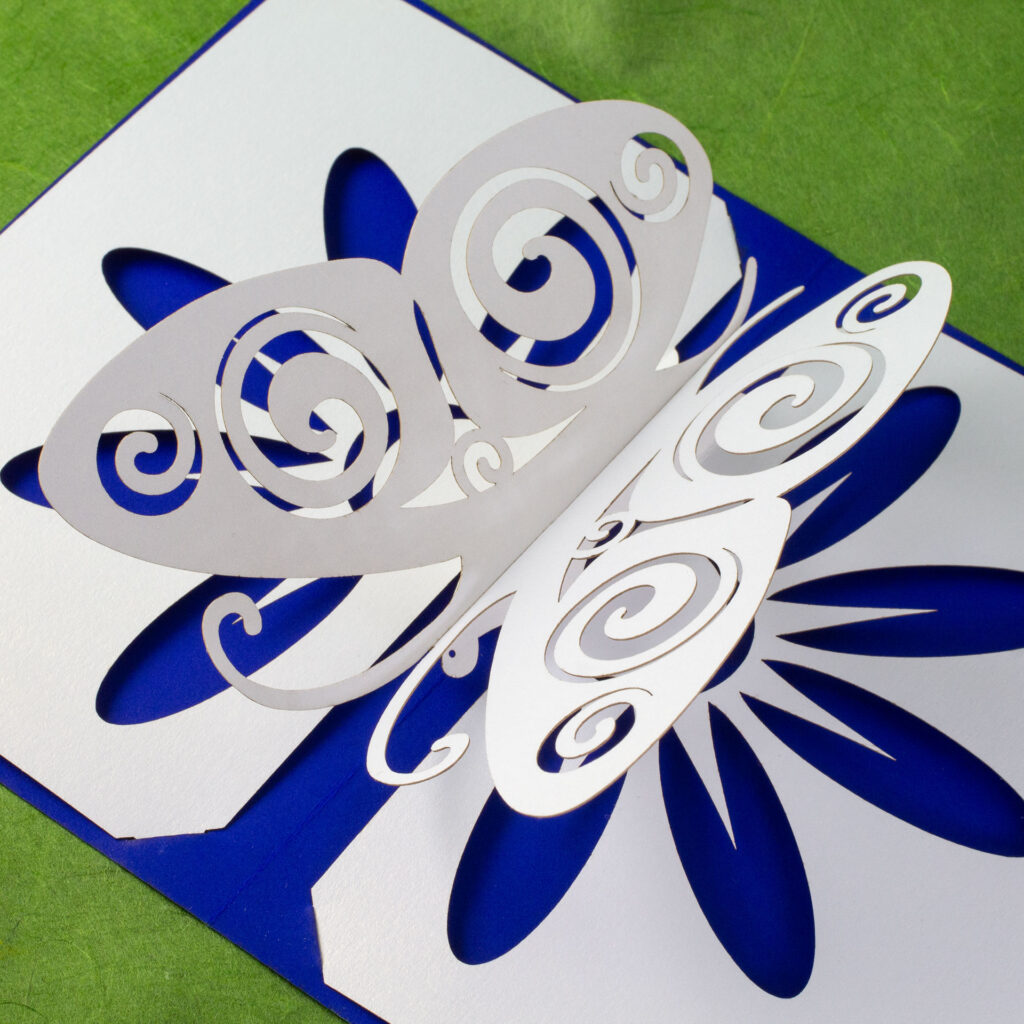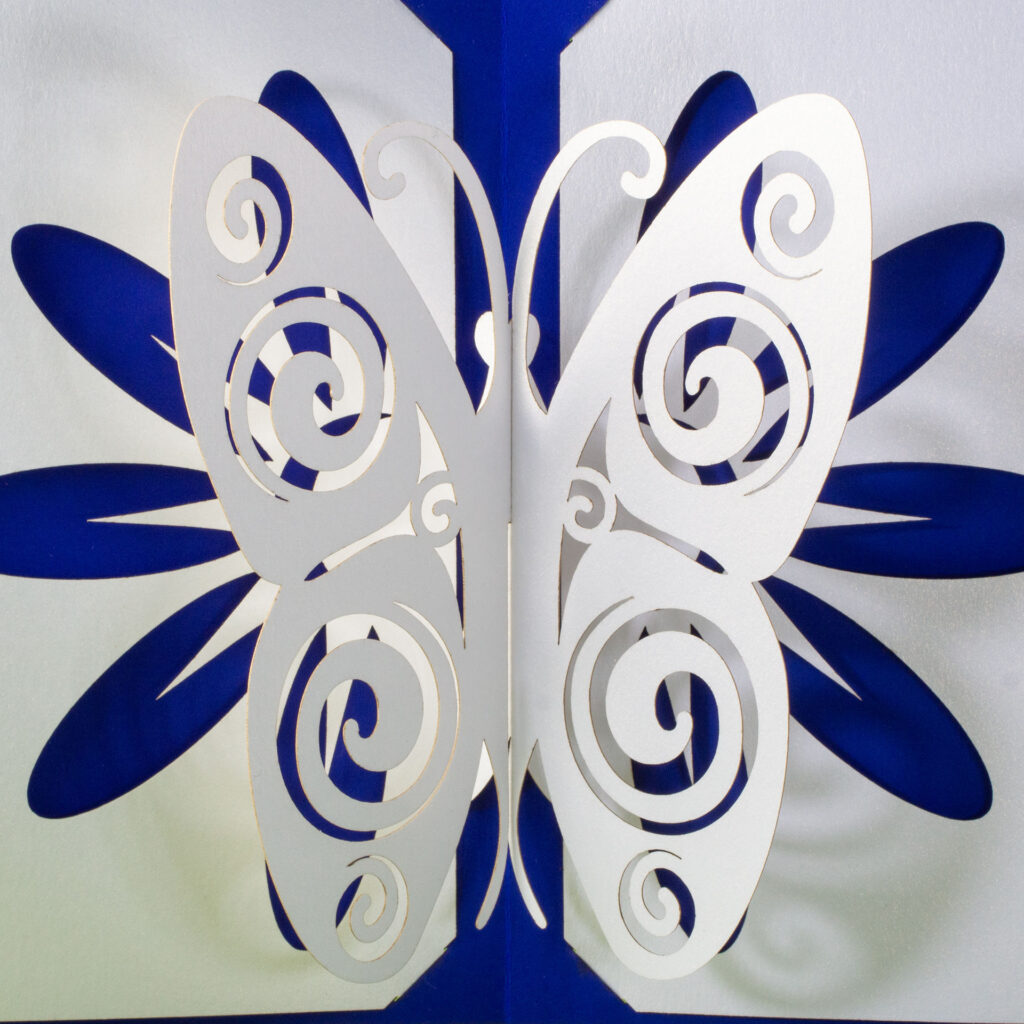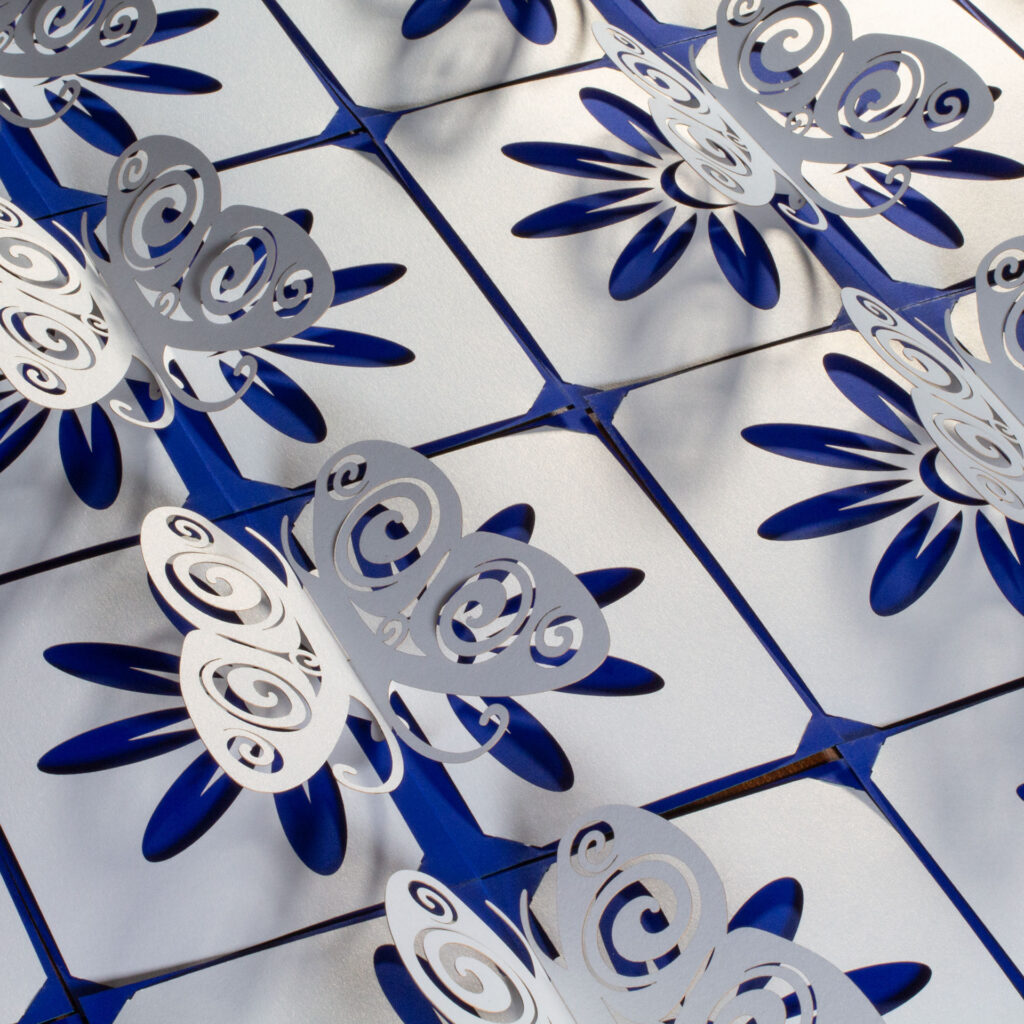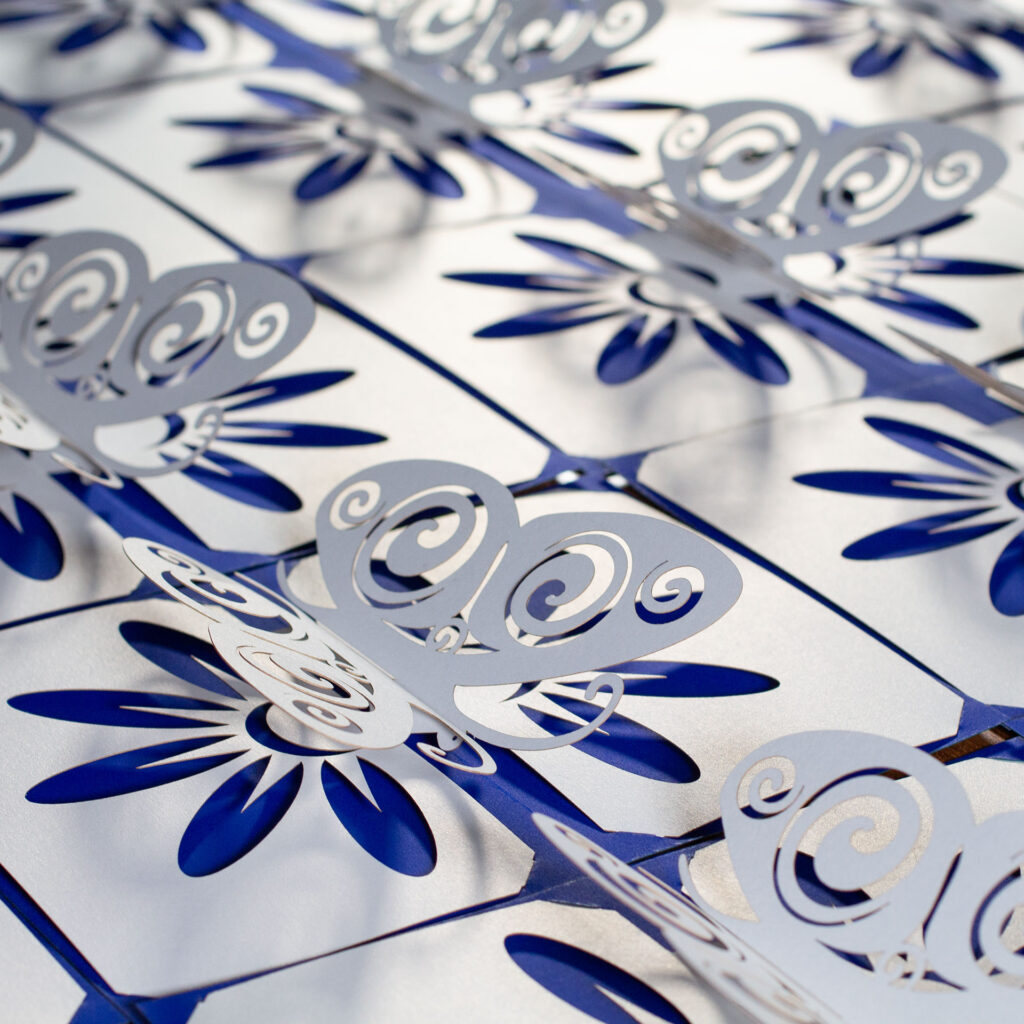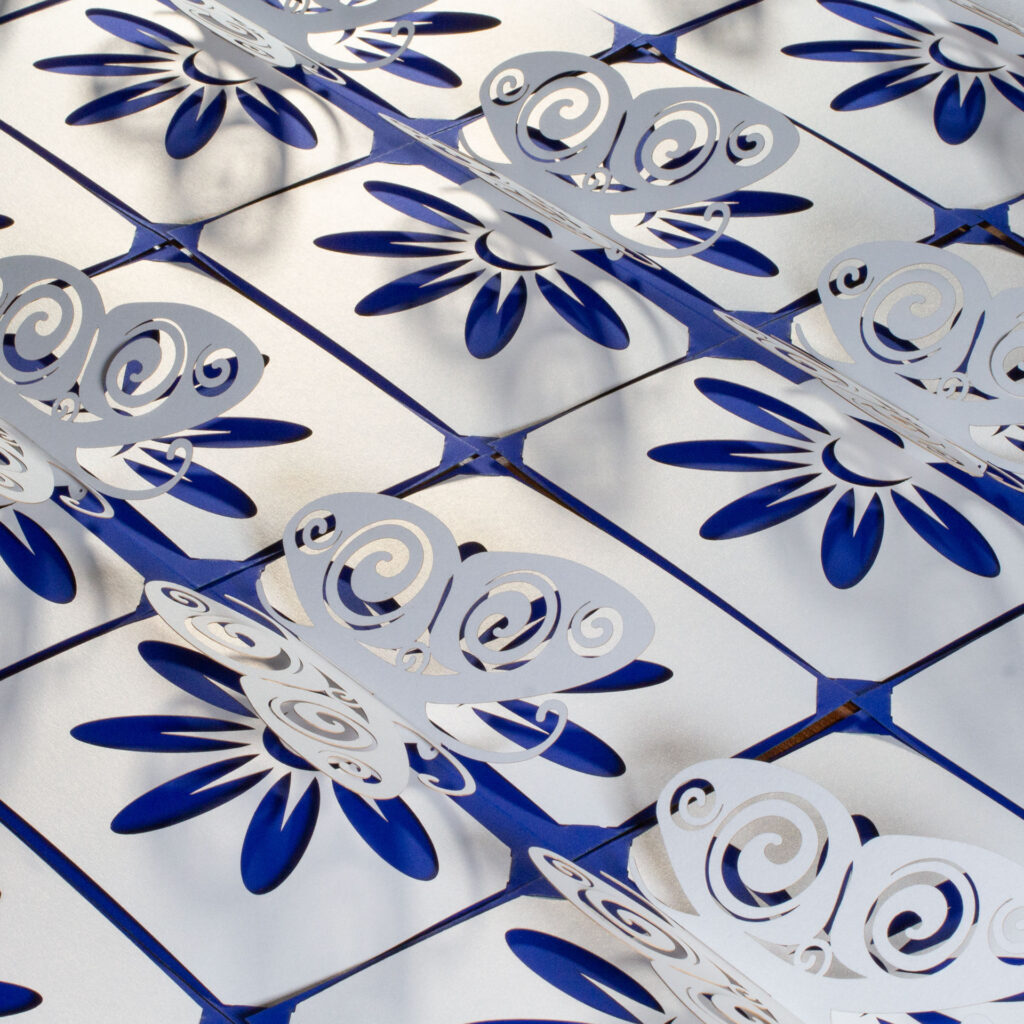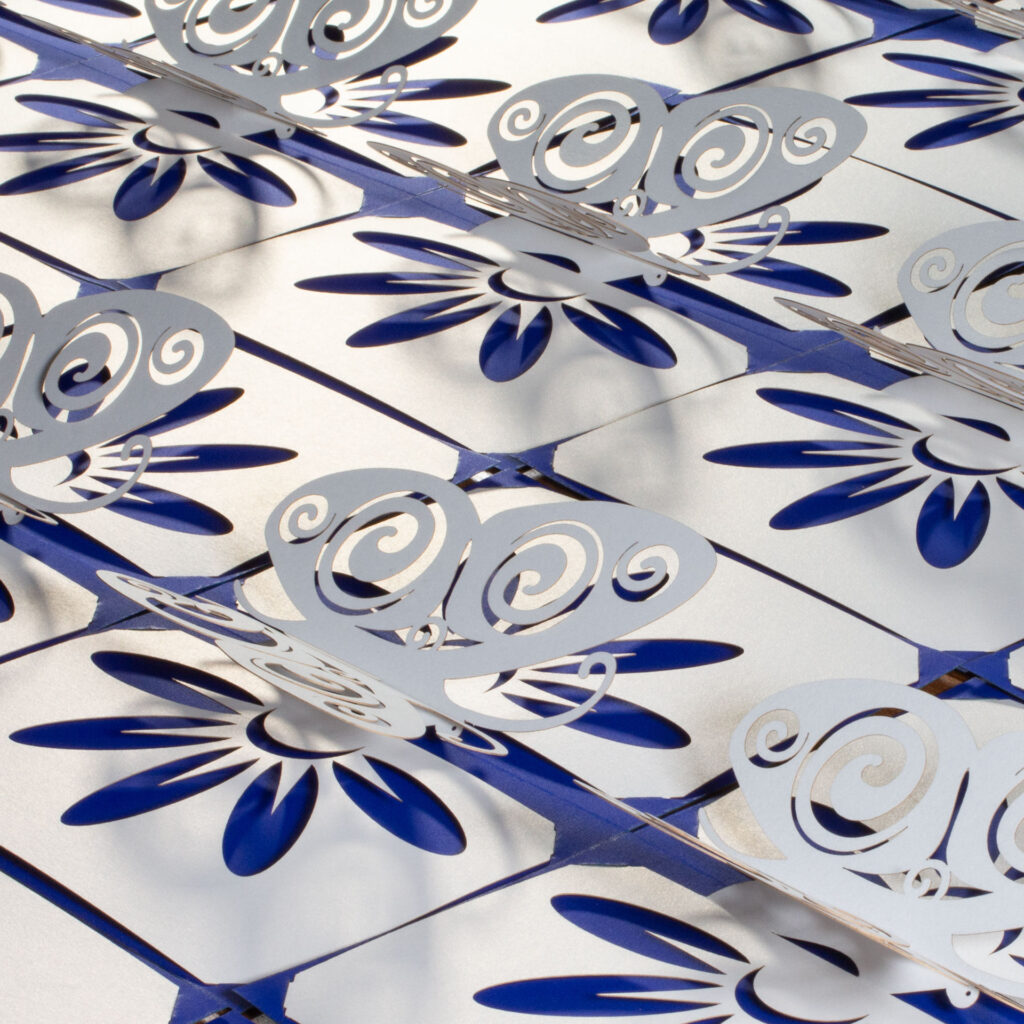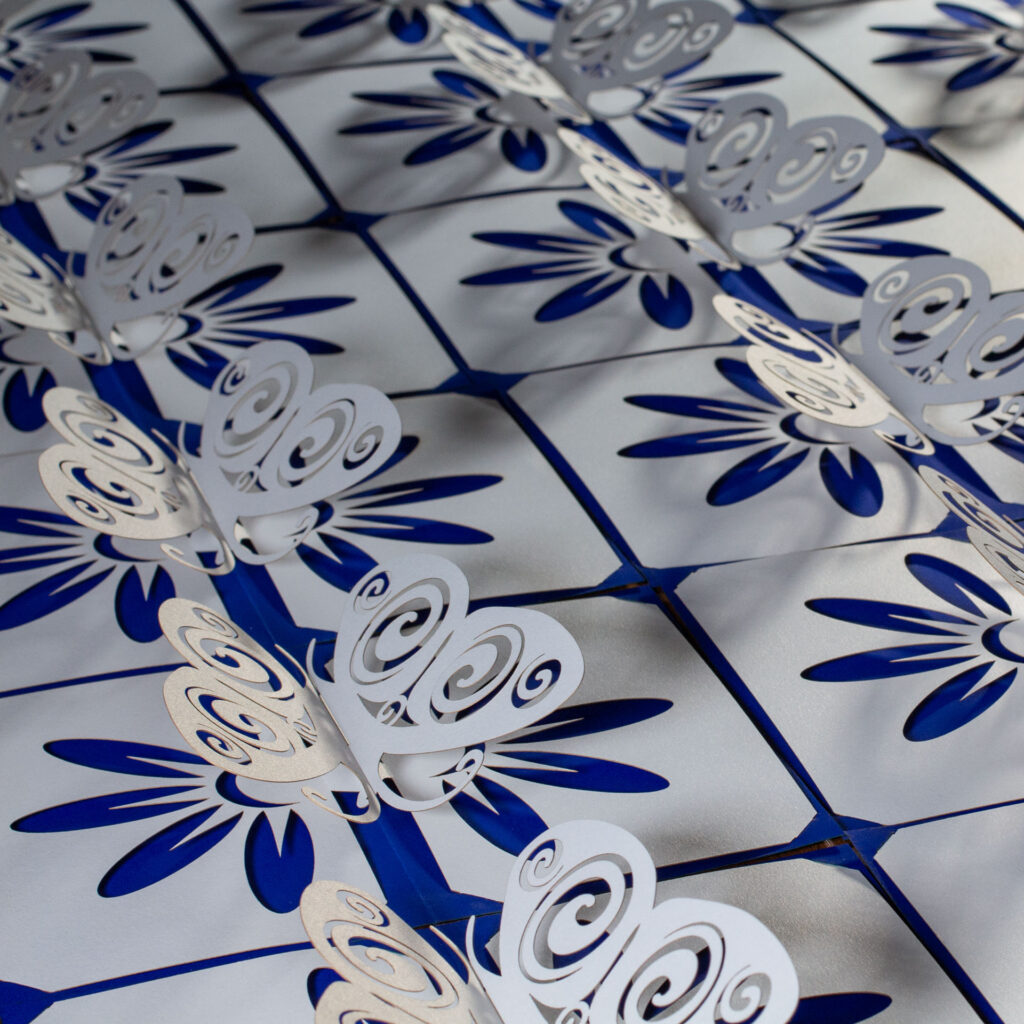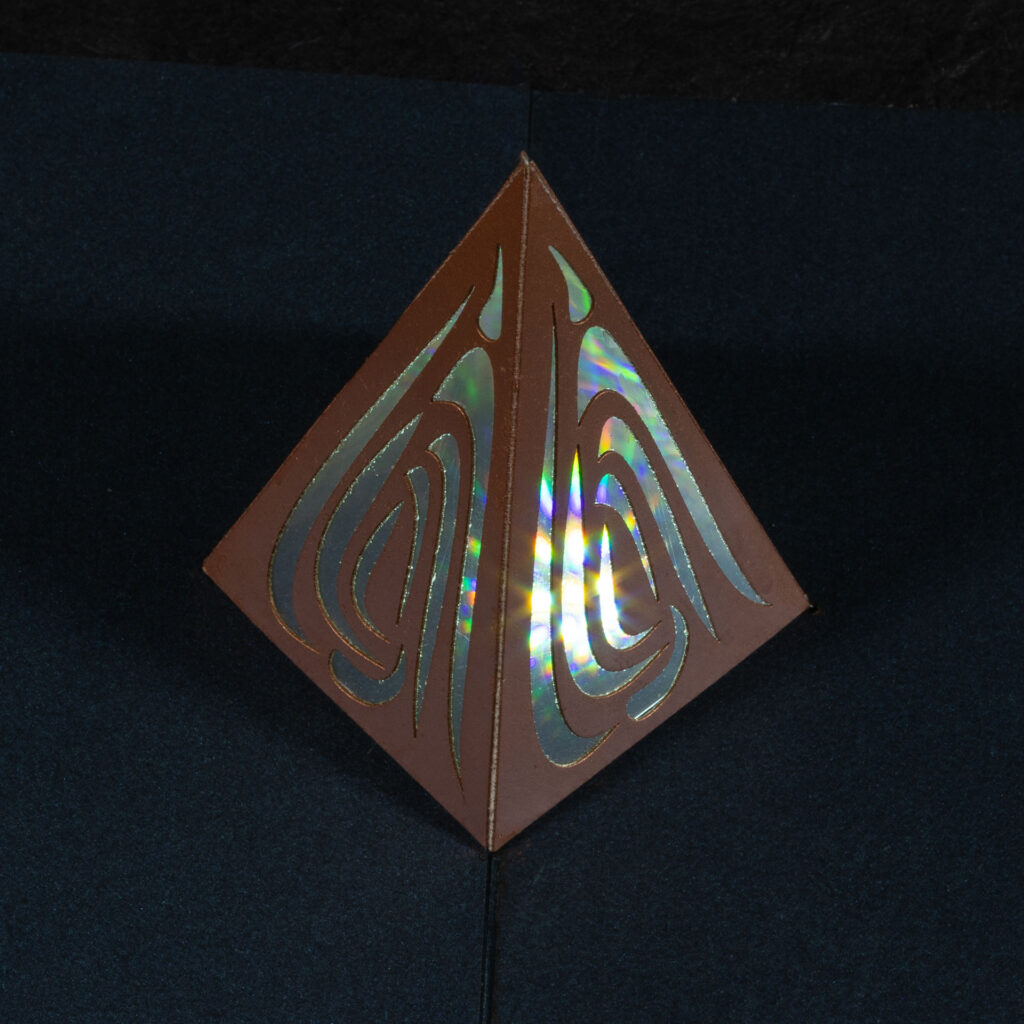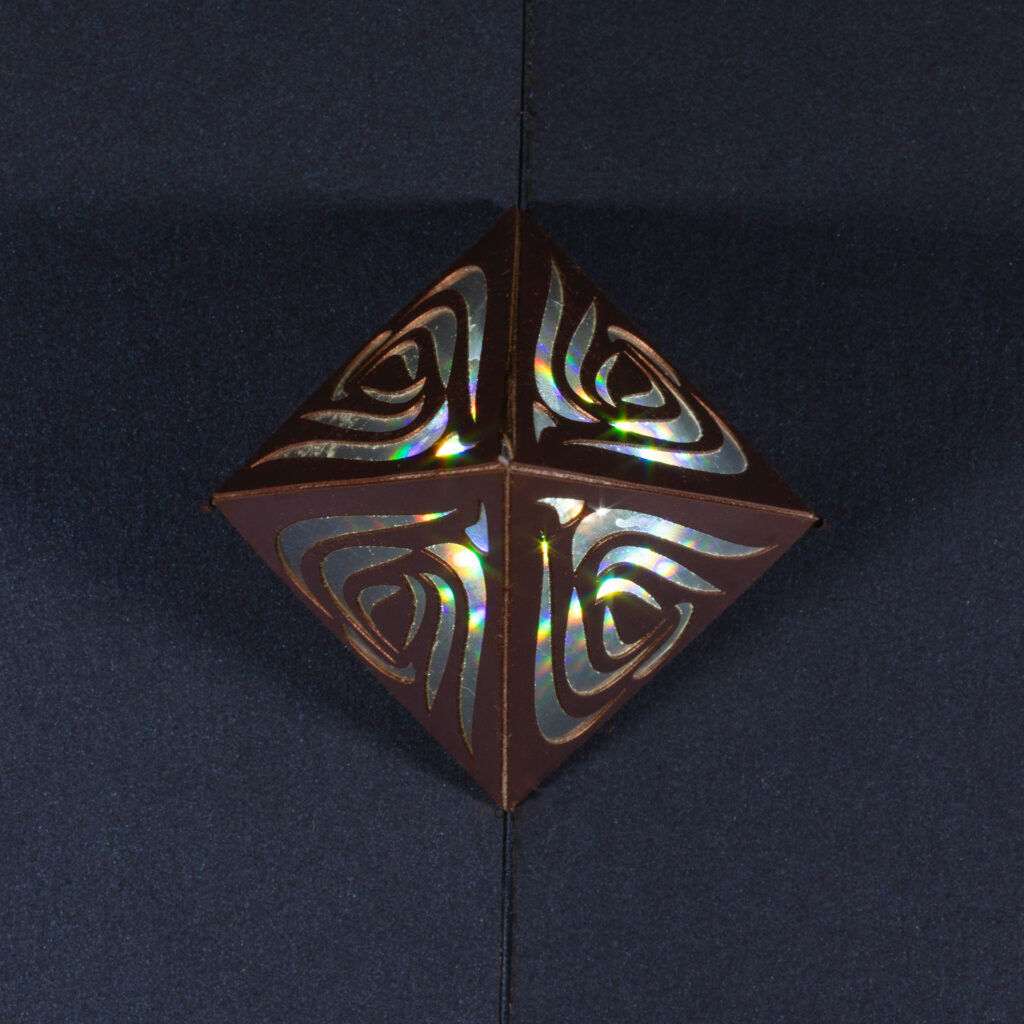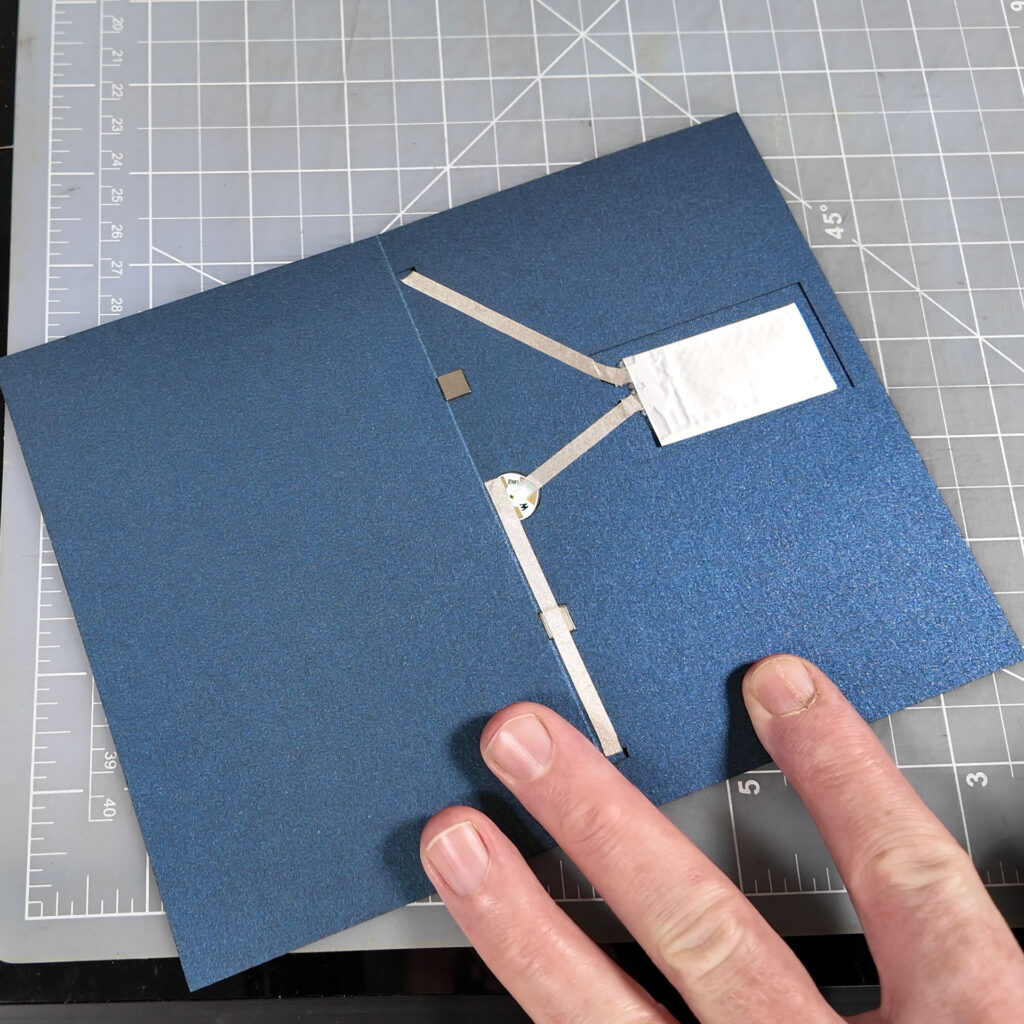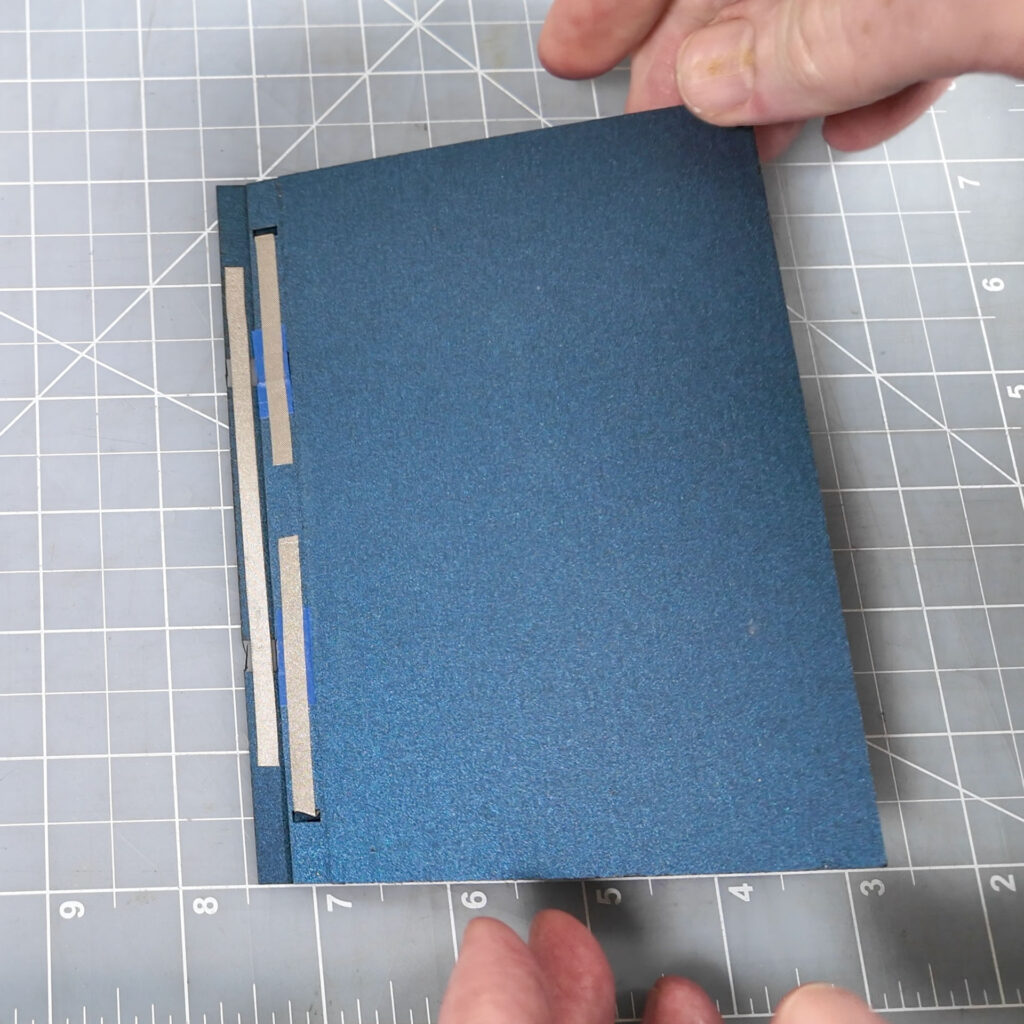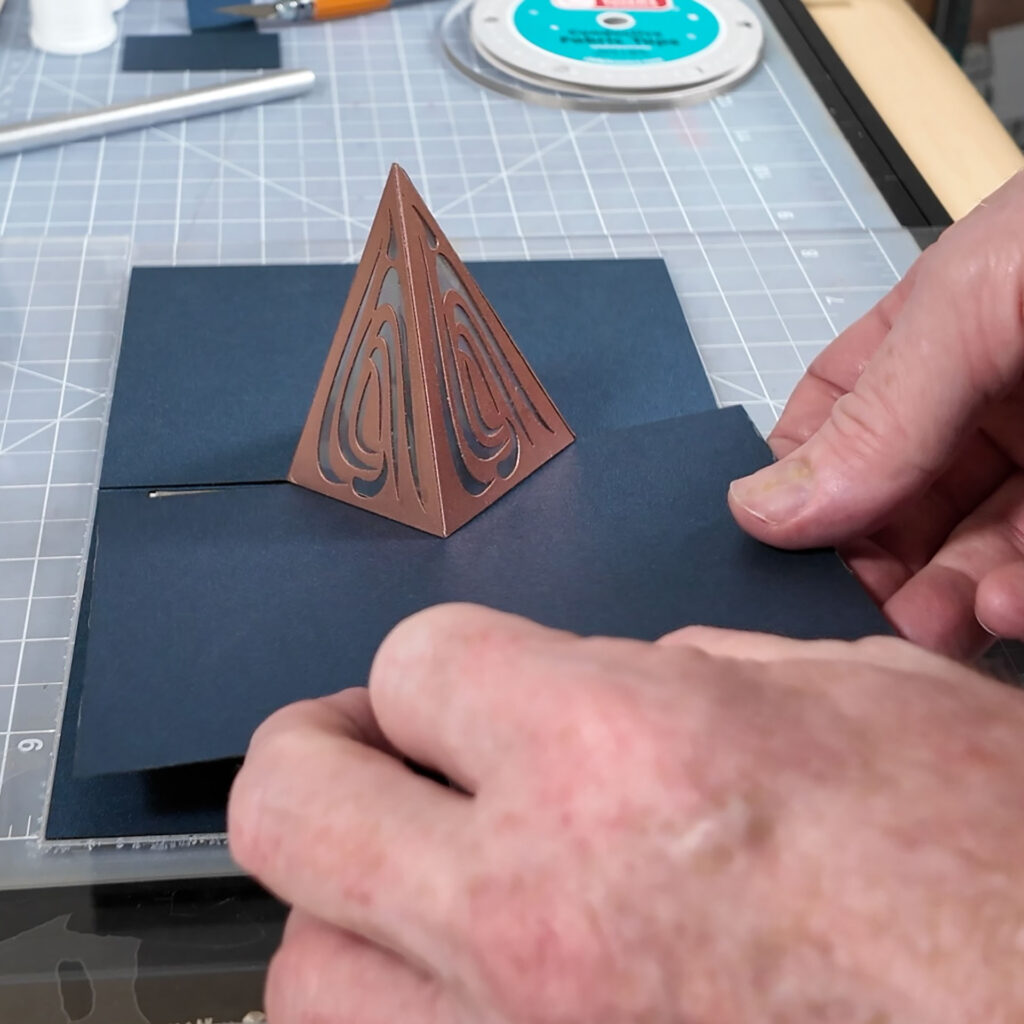
Engraved Retro 51 Pens and Modified Hex Boxes
I ran out of time and energy for making some holiday gifts this year. I really like the Retro 51 Tornado pens, and thought laser engraving some with the recipients’ names would make for fine gifts. It really worked out well, including my test piece with the Evermore ambigram.
I also made some funky hex boxes for the pens in their original tubes to serve as gift wrapping. I wish I had taken the time to manually adjust the kearning/line spacing for the names on the fronts of the boxes. I was rushing to get them done, and was twitchy about burning through too much of my stash of this favorite discontinued violet stock.
The pattern for the box is in the Subscriber Archive, if you want to make one.

Chonk Gift Box with Conforming Inserts
I have seen some images and videos of flat boxes that incorporate a piece with a pattern cut into it that conforms to the contents to hold it in place. The pattern looked pretty easy to replicate for cutting with a laser or CNC cutting machine, and Deirdre Beth in the Glowforge community forum saved me the trouble.
I needed a simpler gift box for one of the D20 chonks than the fancy wooden ones I made. It occurred to me that two conforming pieces would do a great job of holding a chonk in place for shipping.
The box is my quick reproduction of a standard design like I use for shipping the dice reliquaries, cut from my dwindling stash of Violet Curious Skin cover stock. I thought a Celtic knot on the faces of the box would be nice. Because I didn’t want an hour-long laser job engraving them, I used a hatch fill and scored them instead. I put the Everrmore ambigram on the bottom as a maker’s mark.
The inserts are cut from the Silver Curious Metallics card stock. I wanted something light that would make the contents stand out.
This works every bit as well as I had hoped. Once ensconced, no amount of shaking seems to cause any movement of the die inside at all. It should be great for shipping, and make for a fun presentation.
2-minute assembly video:

Butterfly OA/Kirigami Pop Up Card
I made these pop up origamic architecture/kirigami butterflies for the 2024-2025 holiday season. The butterflies are two pieces, laser-cut from the last of the Ice Gold stock (now discontinued). Alas the wonderful Curious Skin cobalt blue stock I used for the backing cards is also no longer available. I liked being able to accentuate the contrast between the blue and white with the extra cutouts, the flower on the inside and the spiral on the outside.
There is also a short video (1:50m) video showing assembly of a card and some rotating views:

Jack-O-Lantern 2025
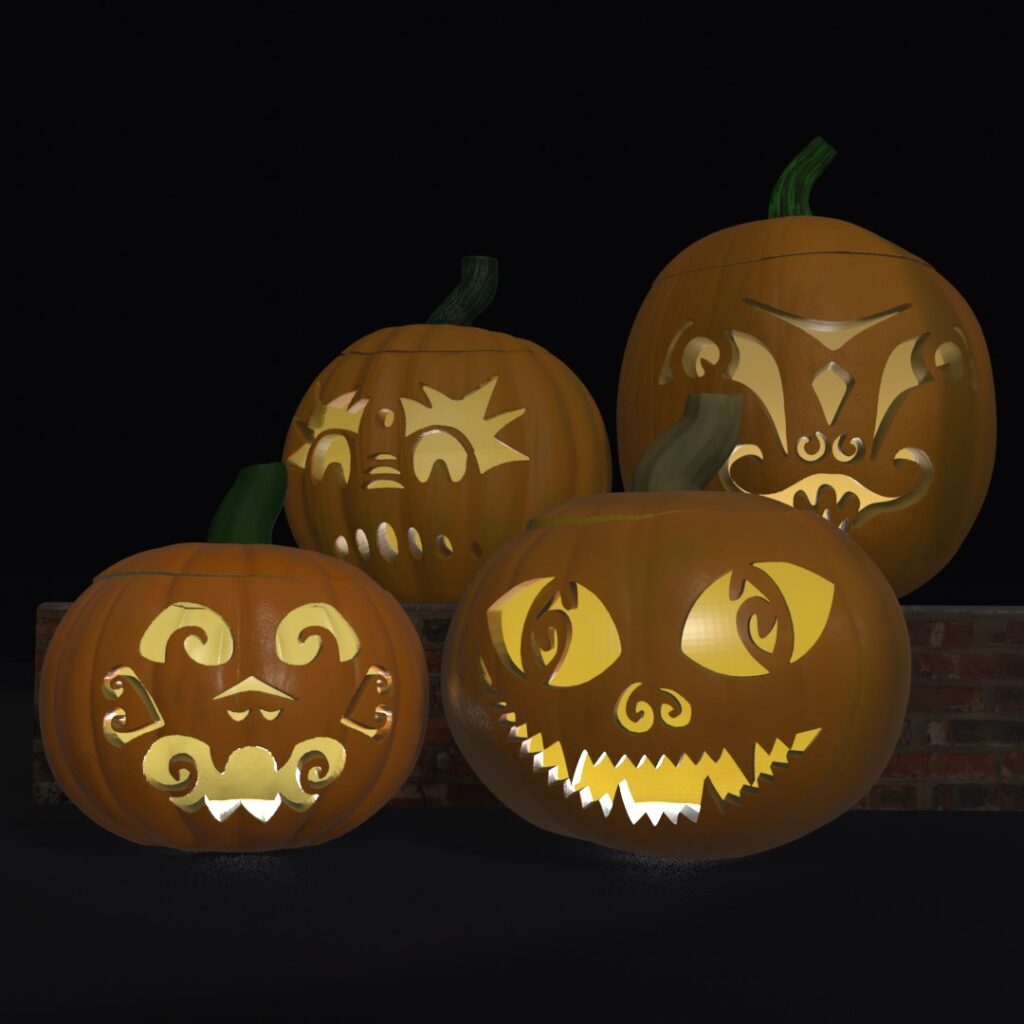
My 2025 jack-o-lantern in the lower right was created in Nomad Sculpt on the iPad, and added to the scene and animated in Blender.

Relic Light-Up Pop Up Card
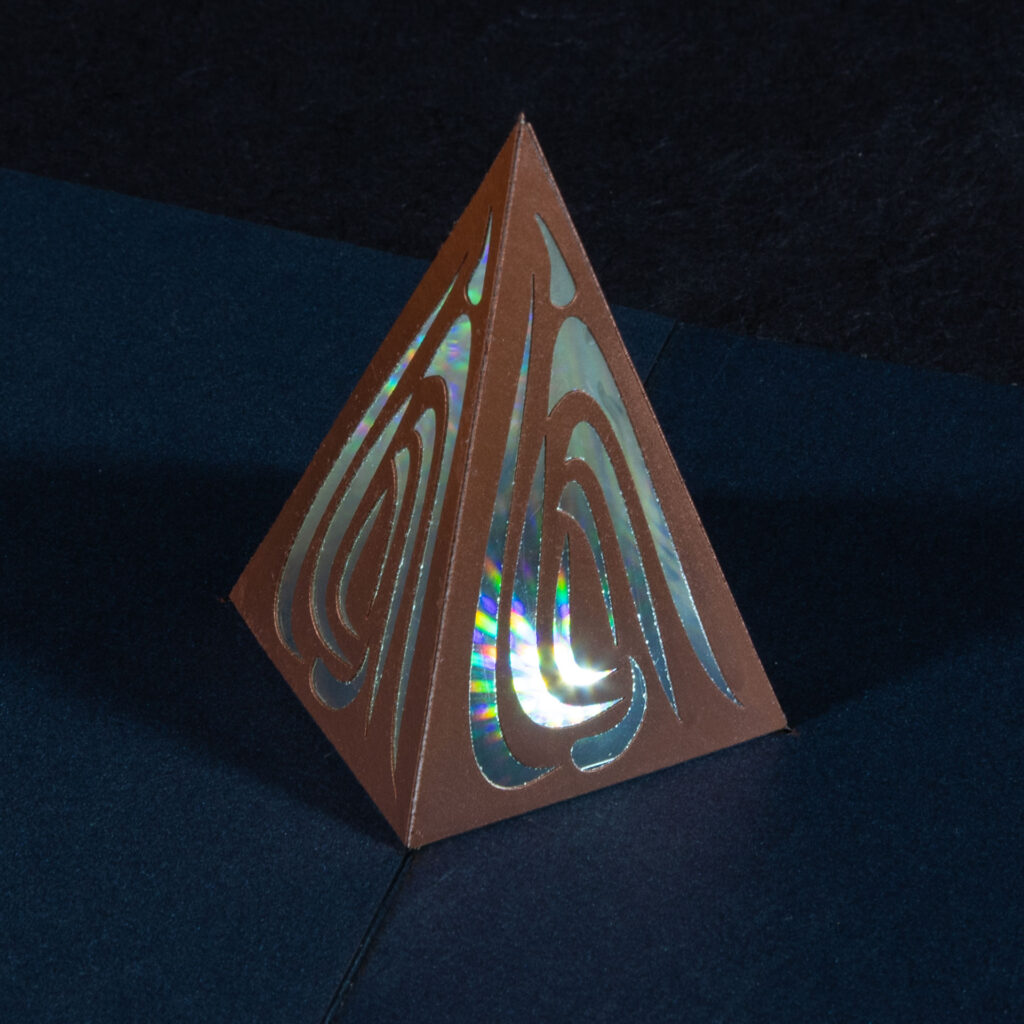
I am once again participating in Chibitronics’ #LightUpPopUpTober event this year. This is prompt-driven, like so many other *tober events. In this case, people are making pop up cards that include light as an element. @5am_popup on Instagram provided the prompts, and @Chibitronics organized assorted artists, with each taking one of the prompts. Some people are making one for every prompt. That’s a bit much for some of us, given process and day jobs. My prompt for this year, on October 26th, is “Relic.”
While I immediately came up with a number of humorous ideas for that prompt, I decided to go with another geometric abstract. A pop up pyramid is not particularly unique. In fact, I was a little disheartened when I was partway through designing this card to see someone had done another light-up pop up pyramid. Mine is more about the variation, embellishment, and the switching mechanism, though. So, I persevered.
The pyramid is 141lb white card stock, which is pretty heavyweight. It was perfectly adequate to stand up to spraying it with metallic copper paint. I drew some curvy abstract cut outs for the faces in Inkscape.
I had some paper glasses from Edmond Scientific with diffraction grating material over the eyes when I was a kid. I remember loving to see the rainbows everywhere. A quick check revealed that the film is easy to come by these days. A lot of people are using it to make chocolate molds to produce chocolates that throw off a rainbow reflection. I have plenty of diffraction grating left, and may get around to trying that, too.
The stuff I bought didn’t really say exactly what the material is, and I didn’t feel like researching that. Since some types of plastic have corrosive and/or toxic combustion products, I decided to cut it with the plotting cutter instead of the laser.
I recently replaced the MacBook I use in the studio, and got new Mac OS native software (SCAL) that drives my old Bosskut Gazelle plotting cutter. This was the first run at using that, and it worked great. I even guessed the right blade depth and pressure settings on the first try, which is pretty amazing for something I do not use often.
I also got some “holographic” sticker paper and tried that on one of my prototype pyramids. It does a nice job making rainbows with reflected light, but really doesn’t do anything with light passing through it.
The base card is three layers of the lapis lazuli blue Stardream 105lb cover stock. The circuit works in three dimensions using the paper as an insulator, and creating a switch across the outside/back of the card. A Chibitronics heartbeat/slow pulse white LED Circuit Sticker provides the light. The traces are all conductive fabric tape, which seems to hold up and connect better than the copper tape on flexible surfaces.
The other big improvement with the switch is that I used matched 1/4” square 1/32” thick magnets behind the positive traces and the bridging strip to hold the switch closed while the card is open. They provide enough force to do that, but not enough to even be noticeable when opening and closing the card.
The cold laminator with the permanent and repositionable adhesive (the later for the panel covering the battery) was great for assembling the base card. A glue stick would probably work, too, but this was easier.
I tried to explain and document how it all works as clearly as I could in the build video. So, check that out if you are interested in how it works.
The pyramid gets attached to the base card with heavy cotton thread and glue as part of the base card assembly.
I was amazed at how well this worked on the first pass. While I made couple pyramid prototypes, and destroyed a couple pyramids and several base card components (frequently by applying adhesive to the wrong sides), the card you see in the videos and photos is the first (and currently only) finished card from this project.


